Stages in a Robust APQP Process
September 9, 2021
Tags: APQP, APQP documentation, APQP process, PPAP, PPAP Approval Process, PPAP documentation
The APQP process consists of five stages:
The flow of stages involved in the APQP are such that the output of one stage acts as input of subsequent stage.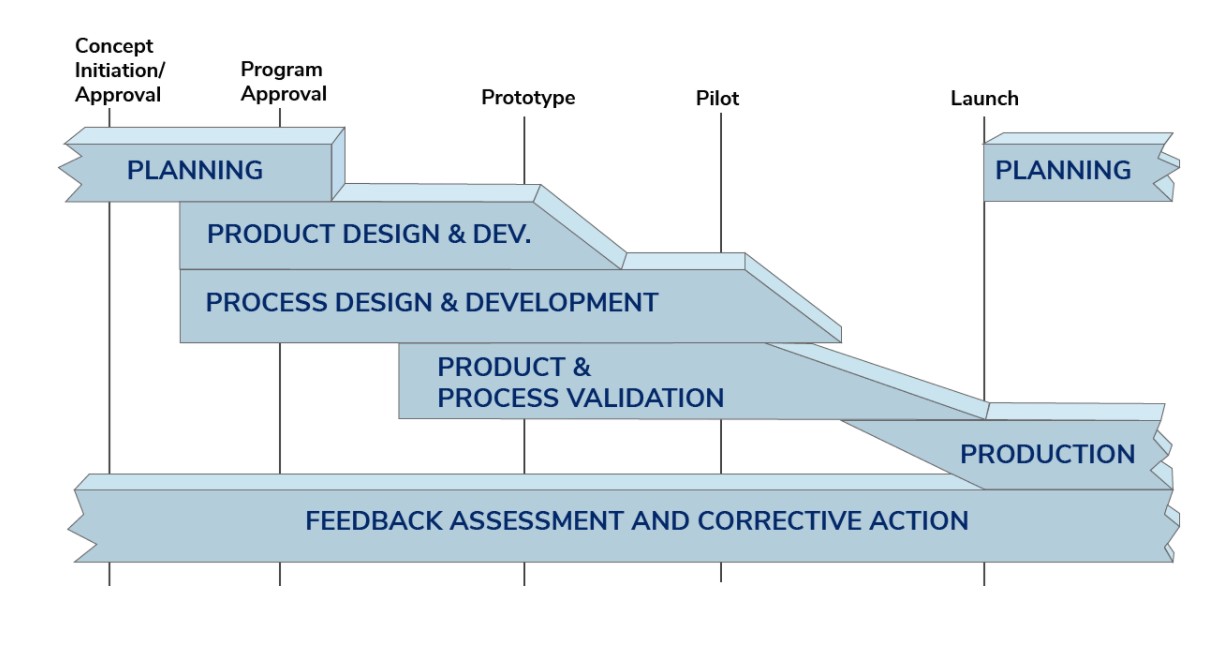
- Planning
- Product Design and Development
- Process Design and Development
- Product and Process Validation
- Feedback and Continuous Improvement
Stage 1: Planning
In this stage supplier understanding the customer requirements and expectations.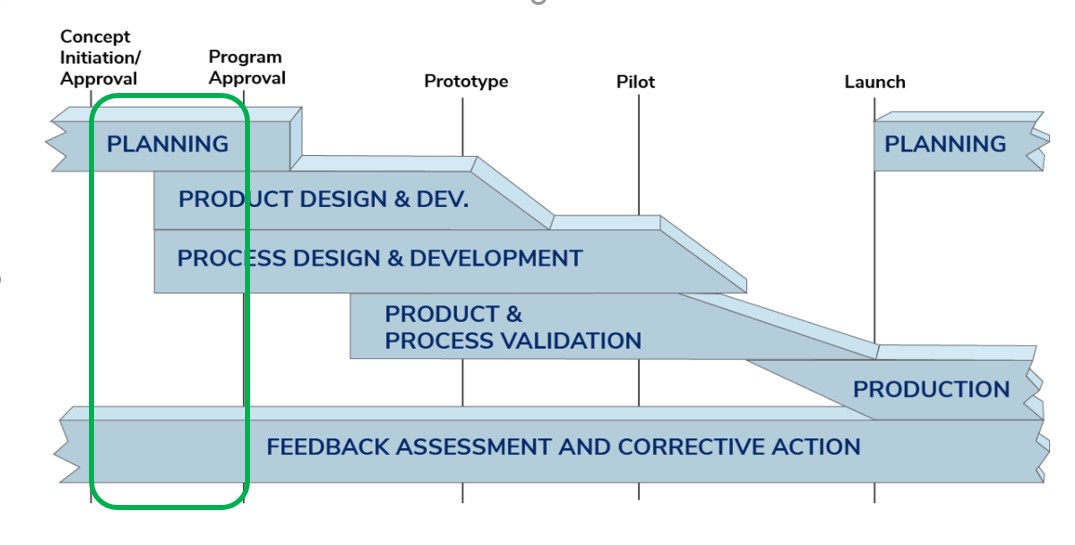
Input |
Output |
Voice of Customer
|
Design goals |
| Business plan/marketing strategy | Reliability and quality goals |
| Product/process benchmark data | Preliminary Bills of Materials |
| Product reliability studies | Preliminary listing of special products and process characteristics |
| Customer inputs | Product assurance plan |
| Management support |
Stage 2: Product Design and Development
Stage 2 verifies design feasibility and compliance.
Inputs (from Stage 1 outputs) |
Output |
| Design goals | Design failure mode and effects analysis (DFMEA) |
| Reliability and quality goals | Design for manufacturability and assembly |
| Preliminary bill of materials | Design verification |
| Preliminary process flow chart | Design reviews |
| Preliminary listing of special products and process characteristics | Design reviews |
| Product assurance plan | Engineering drawings (including math drawing) |
| Management support | Material specifications |
| Drawing and specification changes |
Stage 3: Process Design and Development
Stage 3 verifies the manufacturing capability and measurement methods.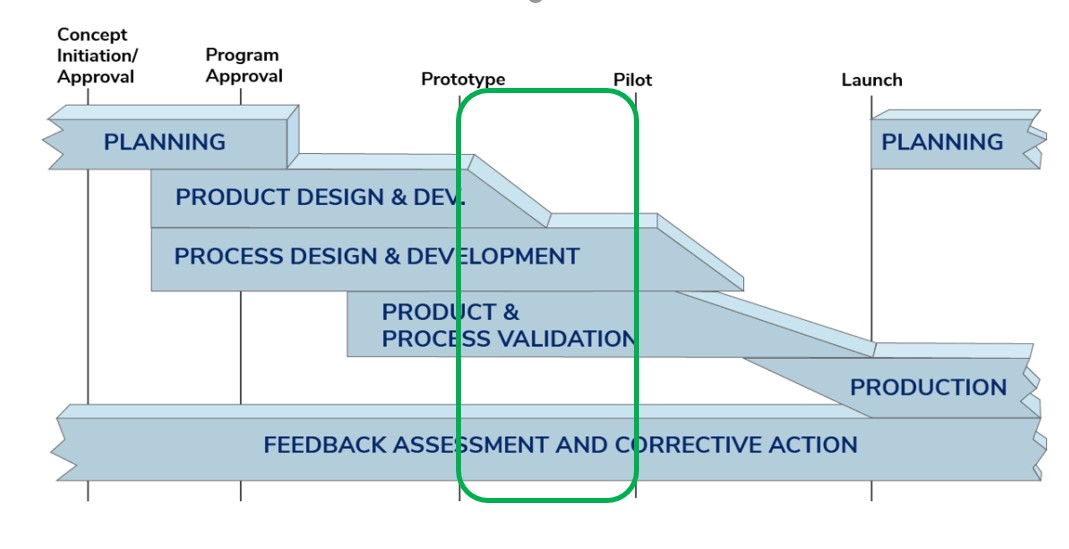
Inputs (from Phase 2 outputs) |
Outputs |
| Design failure mode and effects analysis (DFMEA) | Packaging standards and specifications |
| Design for manufacturability and assembly | Product/process quality system review |
| Design verification | Process flow chart |
| Design reviews | Floor plan layout |
| Prototype build – control plan | Characteristics matrix |
| Engineering drawings (including math drawing) | Process failure mode and effects analysis (PFMEA) |
| Material specifications | Process instructions |
| Drawing and specification changes | Measurement systems analysis plan |
| Preliminary process capability study plan | |
| Management support (including operator staffing and training plan) |
Stage 4: Product and Process Validation
Stage 4 validates the complete manufacturing process and final product.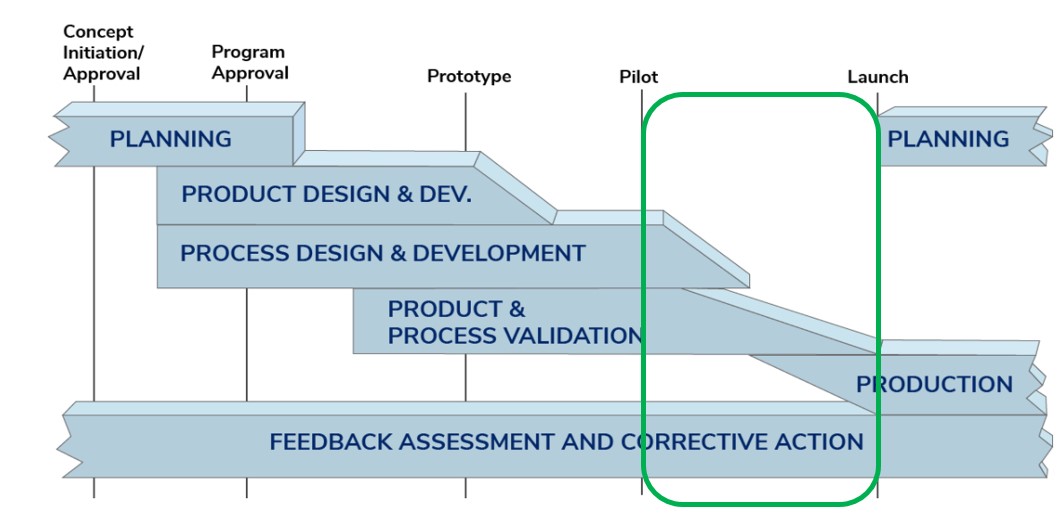
Inputs (from Phase 3 outputs) |
Outputs |
| Packaging standards and specifications | Significant production run |
| Product/process quality system review | Measurement systems evaluation |
| Process flow chart | Preliminary process capability study |
| Floor plan layout | Production part approval |
| Characteristics matrix | Production validation testing |
| Process failure mode and effects analysis (PFMEA) | Packaging evaluation |
| Process instructions | Product control plan |
| Measurement systems analysis plan | Quality planning sign-off and management support |
| Preliminary process capability study plan | |
| Management support (including operator staffing and training plan) |
Stage 5: Feedback and Continuous Improvement
Stage 5 closes the feedback loop.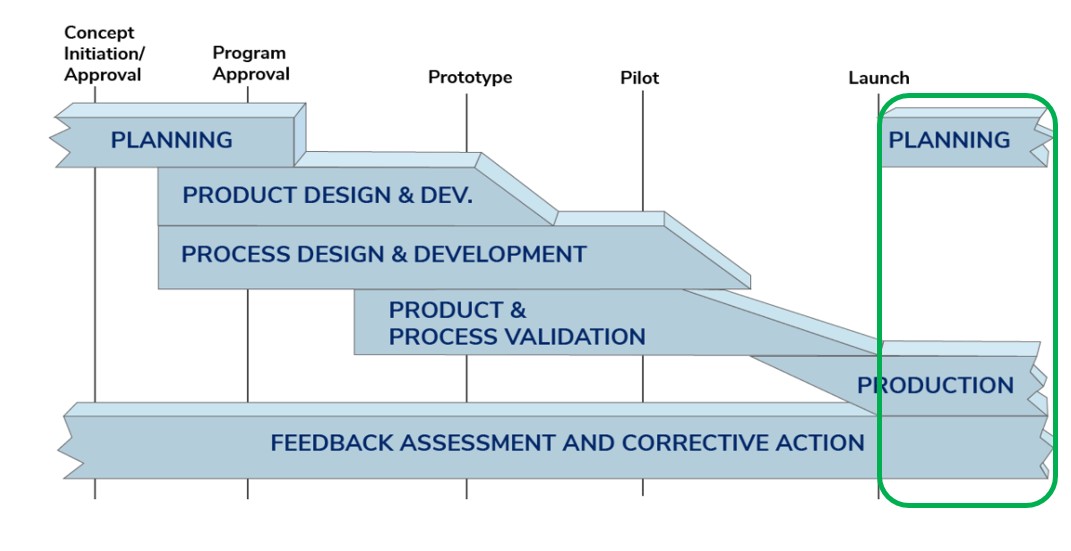
Inputs (from Phase 4 outputs) |
Outputs |
| Significant production run | Reduced variation |
| Measurement systems evaluation | Improved customer satisfaction |
| Preliminary process capability study | Improved delivery and service |
| Production part approval | Effective use of lessons learned |
| Production validation testing | |
| Packaging evaluation | |
| Control plan | |
| Part submission warrant | |
| Quality planning sign-off and management support |










